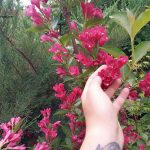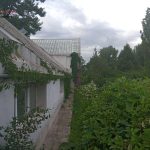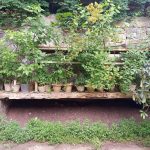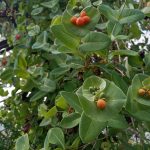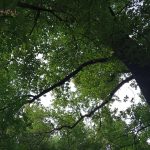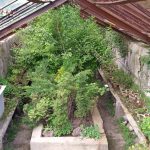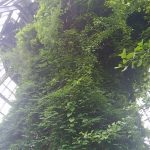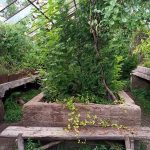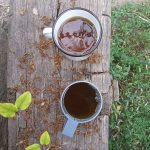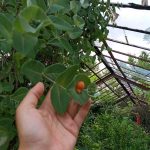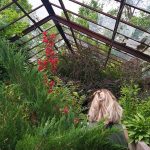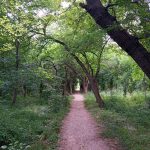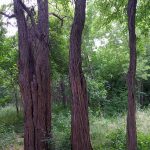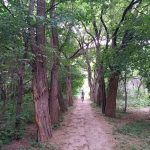
The townhome of the trees
Where do urban trees live? The majority live on the pavements and give a little bit of coolness to the civilians during the summer heat, the rest spends its life in the yards of buildings and houses. Many trees live in the gardens or parks found in different parts of the town.
There are many dwelling places like that all over Yerevan. Almost every district has its own park and the inhabitants love spending evenings there, walking with their families, cycling, reading books, drinking a cup of coffee, or eating ice cream in the cafeteria nearby.
Yerevan parks mainly have names like “Lover’s Park”, “Circular park”, “Molokan’s park”, “The swan lake” etc. Quite recently a new and very beautiful park was established in the very center of the city, dedicated to the 2800th anniversary of Erebuni-Yerevan.
Of course, all the gardens and parks are amazing since there is no alternative to a place where the trees and plants are breathing, nevertheless there is a corner in Yerevan, which can truly be called the main tree habitat. Certainly, that corner is The Botanical Garden.
The widest and wildest home of trees in Yerevan
The Garden is old enough. Established in 1935, 85 years ago, in a semi-deserted part of Yerevan, by three scientists, A. Maghaqyan, A. Hakhverdyan, and N. Mirzoeva, it occupies 80 hectares. In the beginning, 1100 plant species were planted, which have been increased and lately have become more diverse.
In 1954 an expositional plot of land was founded in the territory of the Botanical Garden, named “The flora and vegetation of Armenia”, which exists until now. It represents almost every plant species native to Armenia, both very common and rare or endangered ones (70 species).
In 1980 a rosarium was established as well. Almost 300 types of roses were grown there until 1990. During the energetic crisis in the early ’90s, the rosarium suffered serious harm and lost the majority of its assortment, being partly restored only in 2011 with the help of Switzerland. Nowadays it is called Rosarium Helveticum and has almost 27 sorts of roses.
Until 1992 there was a big greenhouse in the Botanical Garden, where 1260 types of tropical and subtropical plants were grown. Lately, the territory of the greenhouse has been reduced due to the lack of financial means, and now only 300 types of plants can be found there.
There are 4 dendrobiums in the Garden which house-plants from Caucuses, Crimea, Siberia, Eastern Asia (China, Japan, Korea, Far East), Northern America, and Europe.
The purpose of establishing the Botanical Garden was initially to import valuable plant species from different regions, to create an exhibition and create scientific collections, to identify their adaptation to new ecological conditions, as well as to contribute to the greening of cities and settlements. At present, it is not only a wonderful place for research and study works in the flora, but also the countryside for many people in Yerevan.
Different perceptions of the botanical garden
The perception of the Botanical garden by people is ambiguous. For many, it is just a simple park where they go to have a walk or a picnic.
Some people prefer to conduct their yoga classes there։ yoga, made in the fresh air, surrounded by plants, straight on the earth, and accompanied with natural music can never be compared with the class conducted inside four walls. It becomes easier to breathe when you hear the breathing of trees and harmonize with it.
Recently the number of cyclists and sportsmen in the Botanical Garden has increased. In the mornings you can see old people there, who visit the garden for quick walking and gymnastics under the soft sun. In the evenings mostly young people gather there to jog and do some strength exercises. The paths in the garden are edged with high trees from both sides, and make the tedious process of running nice and healthy, contrary to jogging on the street. There are no car emissions or any other odors. It is only you and nature with all its lavishness and beauty.
People can ride their own bicycles in the garden, or rent one on spot. While you fly on your wheeled horse, the perfect images replace each other. The rows of trees periodically get thicker or thinner. The scent of nearby growing jasmine and other flowers fill your lungs and make you breath deeper and deeper.
The Botanical Garden is also a wonderful place for photo shooting.
Welcome to the forest
There also exists a rare type of human beings, who consider the Botanical Garden as a mysterious forest. They go there to read books, drink some herbal tea, lead philosophical conversations, think, or just sit in silence. They go there to feel at home, since being born in a big city, they are, nevertheless, the children of nature, the forest creatures. They are familiar with every corner of the garden, they enjoy listening to the birds singing and the stories of the wind, the conferences of crowns, and the arguments of quarrels. They know which path to take in order to be more isolated in nature. They remember the language of nature and prefer to talk to the trees.
– Hello to you, tree. How are you? I missed you a lot,- they say.
– Good day, human. Sit down on my roots and lean your back against my trunk, let me feel the warmth of your body,- answers the tree.
It is wonderful when trees and humans understand each other. Nature starts talking in the language of the heart, and old wounds begin to heal.
Fox named Alice
Not only plants and trees live in the Botanical Garden. With great love, the workers of the garden tell about one inhabitant of the garden, the ginger fox, named Alice. Probably people had the Russian word “лиса” /li’sa/ (meaning “fox”) in mind while choosing the name for the fox. They say Alice is so careful, that she hides immediately and becomes invisible every time she hears a sound, even the slightest one, therefore in order to see the fox, curious souls must learn to keep silent and move soundlessly. Probably the best time to see her is early morning when nature is just starting to wake up from its sleep and there are only the inhabitants of the garden there.
Apart from the fox, many squirrels live in the Botanical Garden, but unlike their careful ginger friend, they are very naughty, and enjoy making noise, and running all over the garden in front of everyone.
There are also many different species of birds, insects, and lizards.
The four seasons of the garden
The Botanical Garden is magical in winter, especially when it snows. Everything is being buried under the thick slice of virgin white snow, the silence becomes firmer. Nature sleeps and only the snow creaking under the feet talks about life. The air is freezing and fresh.
Spring fills the garden with the sounds of life. In absolute and appropriate silence, one can hear flowers sprouting and leaves coming to life. Different shades of green come to replace the gray colors of late winter.
Summer covers the garden with the flower carpet, the pools get filled with water. The sun plays with the leaves, the light and the shadow give mystery to the area. Life boils.
Autumn brings many other colors, sometimes even rain and clouds. You can murmur at fallen and dry leaves as much as you desire and enjoy the last warm shine of the sun.
All the seasons of the year are wonderful in the Botanical Garden. Each has its own color, smell, sound, and energy. If you are ever going through Yerevan, be sure to visit it, despite the weather. Who knows, maybe you will find your mysterious forest there too, or at least meet the ginger fox, named Alice?

